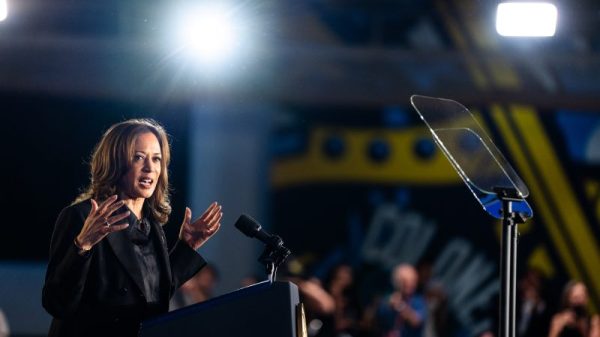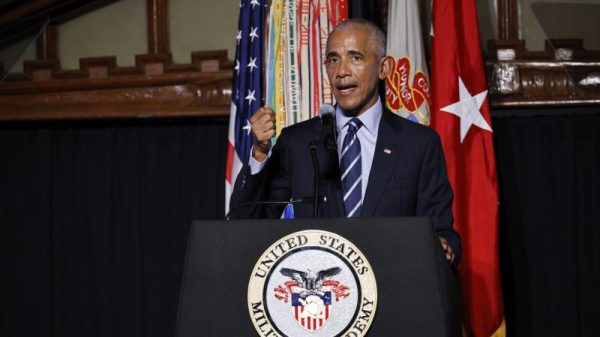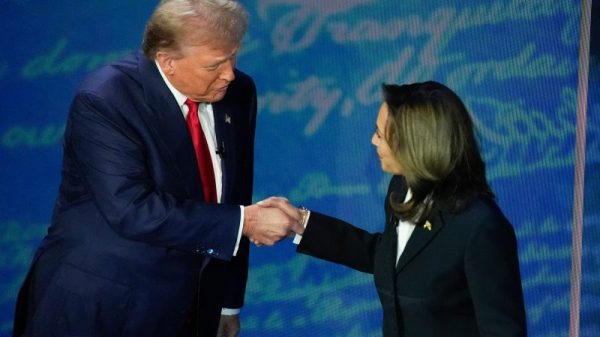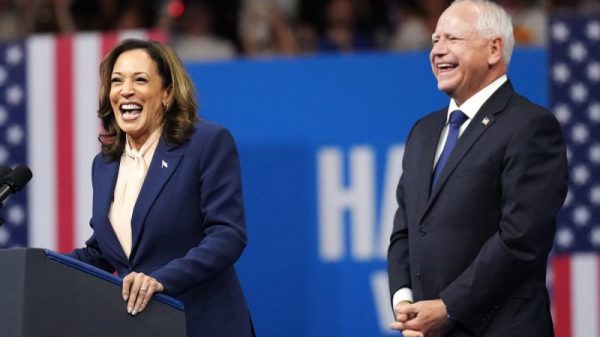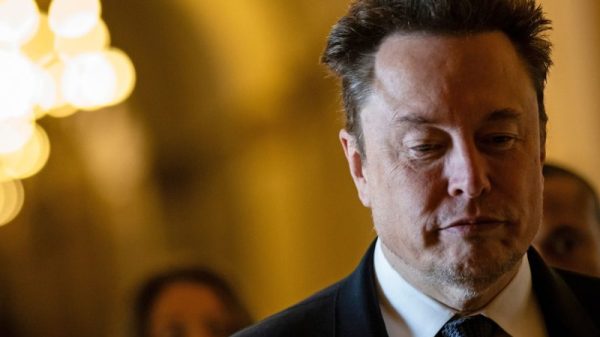“Their bill would cut 81,000 jobs from the VA, reducing outpatient visits by 30 million, and increase the disability claims backlog by an estimated 134,000.”
— White House press secretary Karine Jean-Pierre, remarks at daily press briefing, May 2
“This is the damage when people do not tell the truth about the bill. It actually goes back to the funding where we were just four months ago.”
— House Speaker Kevin McCarthy (R-Calif.), interview with CNN, May 1, responding to earlier White House claims of a 22 percent cut in veterans spending
“How many who survived the battlefield will die waiting because of a vote in Congress?”
— voice-over in a VoteVets digital ad attacking Rep. Lauren Boebert (R-Colo.), May 3
As soon as House Republicans narrowly approved a bill that would raise the national debt ceiling while squeezing federal spending, the Biden administration rolled out news releases with specifics on what supposedly would happen to veterans’ benefits if the bill were enacted. A left-leaning veterans group, VoteVets, immediately launched ads using the administration statistics.
Republicans cried foul, noting that the bill never mentions veterans. McCarthy suggested the “truth” was that the government funding levels were little different from those of just “four months ago.”
Federal budget math is so complex that it frequently looks like a funhouse mirror. What you see depends a lot on where you stand. Let’s try to break this down.
The Limit, Save, Grow Act of 2023 is detailed when it wants to be. It rescinds money that President Biden won to bolster the Internal Revenue Service, terminates his student-loan forgiveness program, adds new work requirements for programs like Medicaid and repeals clean-energy initiatives. It also claws back tens of billions in unspent pandemic aid money. That’s all red meat for conservative Republicans, easy to sell on talk radio or in the conservative media.
But when it comes to setting spending limits on programs authorized every year by Congress, known as discretionary spending, the bill becomes vague: “for fiscal year 2024, for the discretionary category, $1,470,979,000,000 in new budget authority.” Then it suggests slight increases for each of the next nine years.
That’s almost $1.5 trillion with no instructions on how to spend it. House GOP leaders crafted the bill that way because any specifics on which programs would be targeted for cuts would have likely translated into fewer votes, potentially making it impossible to win approval for the bill.
Ordinarily, a congressional budget resolution — which this was not — would indicate the dollar amounts to be spent in 19 spending categories, known as “budget functions.” But the top-line number is a clue that big reductions in spending were anticipated. The bill would essentially set fiscal 2024 spending (which starts on Oct. 1) at the same level as fiscal 2022, which ended on Sept. 30 — despite rising costs in the past two years because of population growth and high inflation. One dollar in 2024 will not buy nearly as much in government services as it did in 2022.
In effect, the bill calls for reducing overall discretionary spending by nearly 10 percent from 2023 to 2024. McCarthy skates past this uncomfortable fact when he disingenuously claims the bill “goes back to the funding where we were just four months ago.”
To put this proposed reduction in perspective, the automatic “sequester” spending cuts in 2012-2013, mandated by the 2011 Budget Control Act, were just 5 percent — and those were considered so onerous that Congress repeatedly struck bipartisan deals to thwart the full impact of the automatic process.
Administration officials saw the House bill’s vagueness as an opportunity to go on the attack. After Biden suggested Republicans would target Social Security and Medicare, GOP lawmakers insisted the old-age programs were off the table — even though they are a substantial part of the government budget. Numerous GOP lawmakers also said they would not touch defense spending and might even increase it.
So administration officials simply removed one budget function — 050, which funds the military activities of the Department of Defense, the nuclear weapons-related activities of the Energy Department and national security activities in several other agencies — and then calculated what the impact would be on the rest of the discretionary budget. Function 050 accounts for about 44 percent of all discretionary budget authority, according to the Congressional Budget Office. With defense off the table, Republicans essentially would need to double the cuts in nondefense discretionary spending to achieve the $1.47 trillion annual spending target.
If reductions were implemented equally across the remaining programs, for veterans’ health care that translated into nearly a 22 percent reduction in spending in just one year. Enacted spending for VA medical care of $119 billion in 2023 would fall to $93 billion in 2024, according to the White House calculations.
The administration carefully laid the groundwork for the attack. On April 21, the Department of Veterans Affairs issued a news release warning of the bill’s impact, with specific numbers — “30 million fewer Veteran outpatient visits, and 81,000 jobs lost across the Veterans Health Administration.” Then, more than 20 veterans groups allied with Democrats, such as VoteVets, sent lawmakers a letter requesting that VA funding be protected in the bill. The president of Veterans of Foreign Wars also wrote McCarthy, seeking “explicit assurances” that funding for veterans care would not be disrupted.
Before the vote, Republicans denied VA would be on the chopping block, but without a specific carve-out, the White House felt empowered to blast out the “22 percent cut” number after the House approved the bill on April 26. In a tweet on May 2 that received 10 million views, President Biden also noted that the bill did not specifically wall off veterans benefits.
The specific numbers used by the White House give an illusion of accuracy to made-up math. Republicans would face daunting options if they crafted an appropriations bill with this target in mind, but no one knows what choices would be made when actual votes are cast on future budgets. The VoteVets ad, using the White House numbers as a source, takes the spin to a Four-Pinocchio extreme, suggesting veterans may die when in fact no vote on the fiscal 2024 Veterans Affairs budget has yet been cast. (VoteVets spokesman Eric Schmeltzer responded that the ad posed a question about what might happen if the GOP plan were enacted.)
There’s no logical reason, except potent politics, for why the White House would take Republican lawmakers at their word that they would not touch defense spending but ignore similar assurances on veterans spending. Since the Sept. 11 attacks, veterans’ health spending has soared with bipartisan support.
In 2007, VA budget documents show, the discretionary budget for the Veterans Health Administration was $39 billion when there were about 5.5 million “unique patients” — people treated by VA or whose treatment is paid for by VA. By 2023, the budget had soared to $119 billion, three times higher, even though the number of unique patients has grown only about one-third, to 7.35 million.
In other words, it would be highly unlikely for Republicans to consider cutting veterans funding. McCarthy’s spokesman on May 2 issued a statement saying “House Republicans will not cut veterans benefits and will responsibly prioritize spending in the upcoming appropriations process.”
In a statement, a White House spokesperson said: “Congressional Republicans could have protected veterans’ medical care in the ‘Default on America Act,’ but they chose not to—which is why 24 veterans organizations opposed this bill. While the Speaker changed the bill at the last minute to heed MAGA extremist demands, the pleas of veterans groups were ignored.”
With both defense and veterans spending apparently off the table, congressional Republicans will face politically perilous choices when they begin to craft appropriations bills.
An illustrative example can be found in a proposed 2023 budget issued by the Center for Renewing America, a conservative group headed by Russ Vought, a White House budget director under President Donald Trump. The CRA budget, like the House GOP bill, basically froze discretionary spending at the level reached two years earlier. It also proposed to boost defense spending slightly and adopted the exact spending number Biden allocated for Veterans Affairs.
But look what happens to the spending at other agencies in just one year under the plan: Department of Homeland Security spending would barely increase from Biden’s proposal, while State Department funding would plunge 53 percent, Department of Housing and Urban Development would plummet 48 percent, the Education Department would fall 39 percent, and the Department of Health and Human Services would drop 37 percent. Imagine the field day the White House could have if Republicans cast votes with these kinds of numbers.
In fact, veterans programs are scattered all across the budget — HUD, for instance, issues housing vouchers to families with veterans to alleviate homelessness — so if veterans programs are truly off-limits, that would require even bigger reductions in nonveterans programs.
A scalpel is sometimes hard to wield when the numbers are so big. Though the House GOP bill never mentions veterans, the rescission of unspent covid funding would seize about $2 billion from VA, which administration officials say is currently being used to pay veterans’ medical bills. House Republicans have said they have serious questions about how VA has spent the money.
Neither side covers itself with glory here. The White House acts as if the numbers it conjured up are real, when in fact veterans’ benefits are unlikely to be cut, especially at such magnitudes. Yet for all their complaints about the White House spin, Republicans have not confronted the consequences of the brutal Hunger Games scenario they have arranged for government programs that do not include the military or veterans. McCarthy is whistling past the graveyard when he suggests enacting such a budget will be easy.
(About our rating scale)
Send us facts to check by filling out this form
Sign up for The Fact Checker weekly newsletter
The Fact Checker is a verified signatory to the International Fact-Checking Network code of principles


